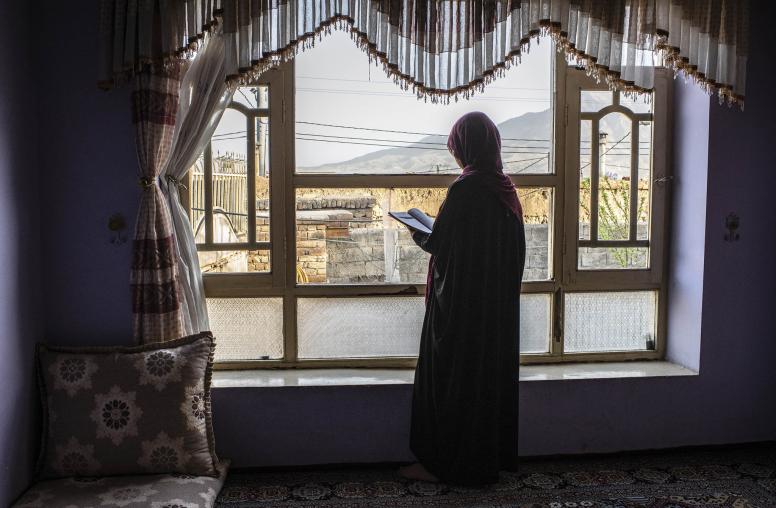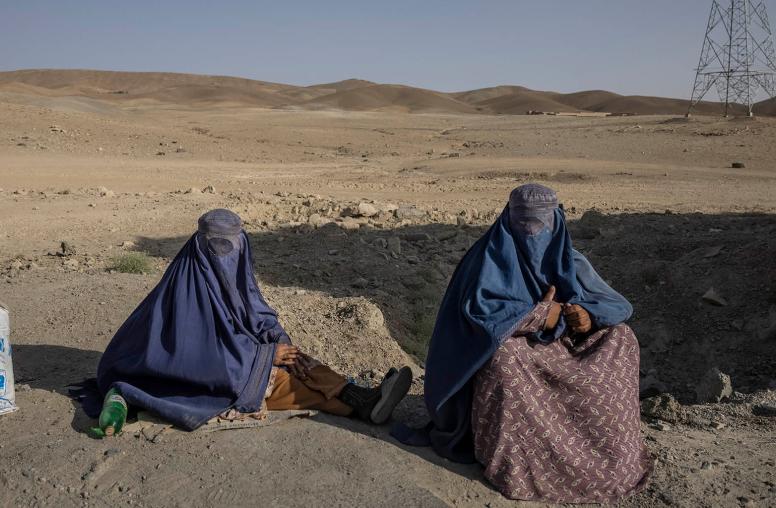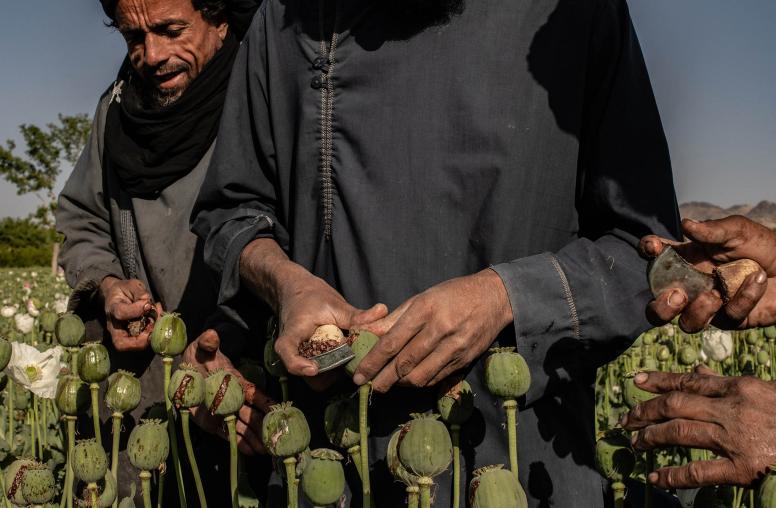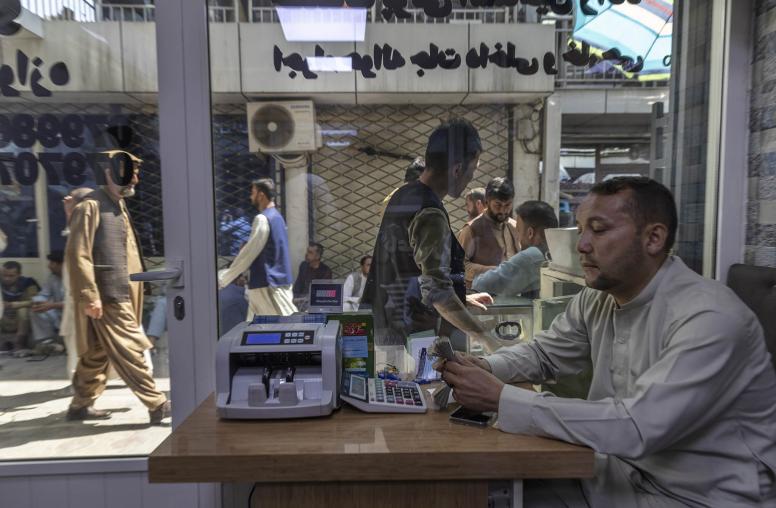Afghanistan’s Two Years of Humanitarian Crisis Under the Taliban
Afghans need long-term sustainable solutions, which require increased humanitarian assistance, economic stability and resumed development aid.
The Taliban’s takeover of Afghanistan in August 2021 immediately exacerbated the country’s precarious humanitarian situation, leaving millions in need of food assistance and other support. Two years later, the situation remains dire, with Afghan women and girls acutely affected by the Taliban’s draconian restrictions on their daily lives. The international community continues to struggle to find a balance between providing desperately needed aid while also pressuring the regime in Kabul to moderate its hardline policies. While Afghans need emergency assistance, the country will continue to deal with cycles of crises until its deep-seated economic challenges are addressed.
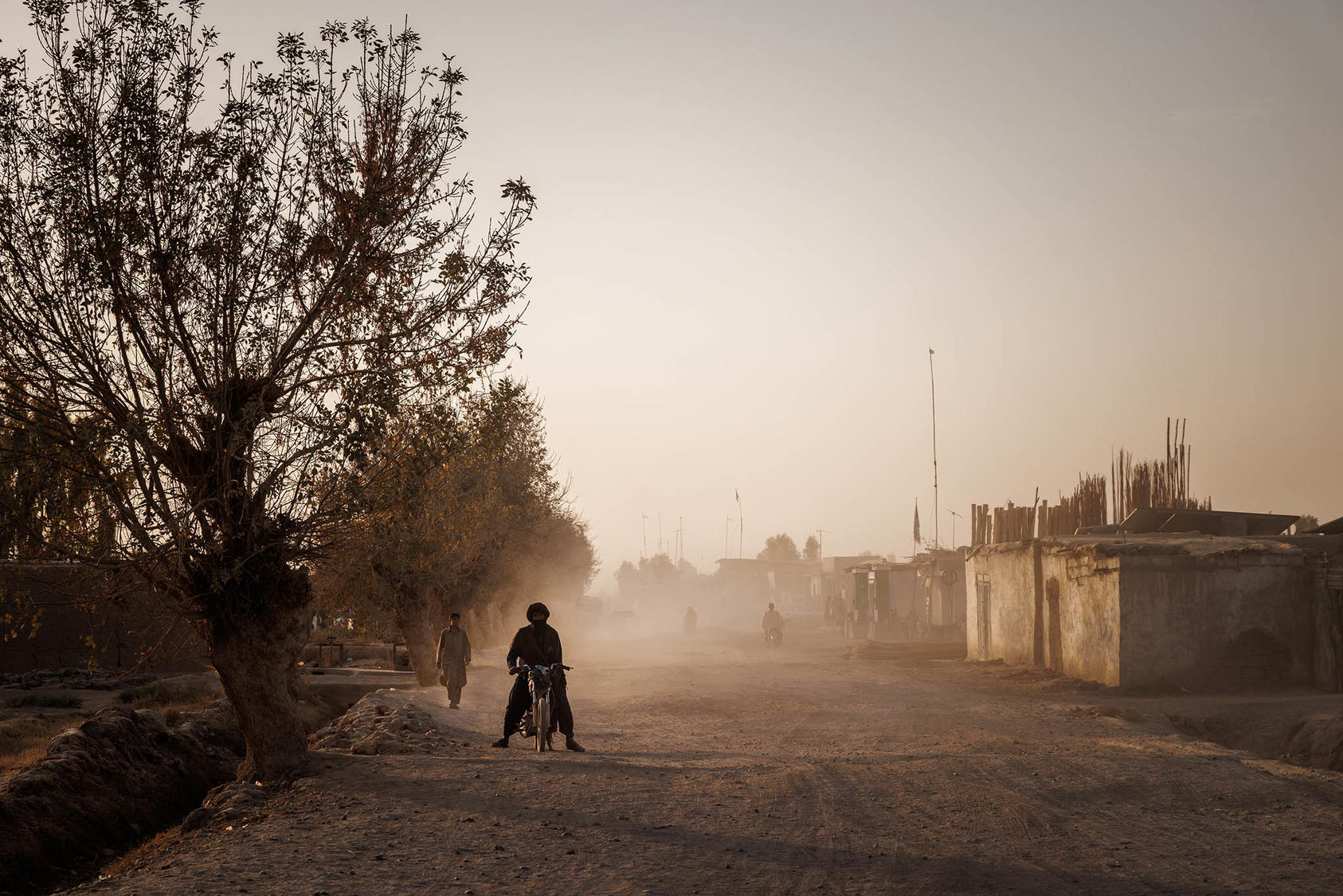
Mercy Corps’ Dayne Curry, Norwegian Refugee Council’s Becky Roby, CARE USA’s Ellen Bevier and the International Rescue Committee’s Anastasia Moran discuss the humanitarian situation facing the country, how woman and girls have been impacted by the Taliban’s restrictions, and how the United States can help address the crisis.
It’s been two years since the Taliban took control of Afghanistan. Can you tell us what you are seeing as far as humanitarian needs are concerned?
Curry: The humanitarian response in Afghanistan simply cannot keep pace with the country’s worsening conditions. More than 29 million remain in need, over half of whom are children, while 15.3 million people are experiencing acute food insecurity. Almost 60% of households face barriers accessing safe water, and cholera and other diseases pose significant threats. Meanwhile, 22.1 million people require protection assistance, and 8.7 million children need education support.
These needs skyrocketed with the collapse of the former government and the subsequent suspension of international aid. Two years later, shocks from recurrent drought and seasonal flooding continue to threaten Afghanistan’s critical agriculture sector and limit access to clean water. Additionally, policies restricting individual freedoms, particularly those of women and girls, impede the humanitarian response, and Afghanistan’s authorities lack the capacity to provide services to their people.
Compounding these challenges is the reality of the international community’s declining commitment to Afghanistan. Support for long-term economic growth all but ended with the suspension of development assistance. Though some humanitarian assistance continues, the U.N.’s request is less than 30% funded, and humanitarian organizations must navigate a complex set of sanctions that complicate aid delivery. While programs in food security and health are better funded than others, the funding shortfall for clean water and irrigation exacerbates the impacts of the drought on agriculture, livelihoods and health. In summary, this combination of political and environmental factors has only served to deepen humanitarian needs over the past two years.
What are the key factors driving the humanitarian need in Afghanistan?
Roby: Today’s humanitarian crisis in Afghanistan is primarily a political one. Since the Taliban’s takeover, the regime has enacted a series of egregious edicts and restrictions that have had a devastating impact on the population, particularly for women and girls. These policies have vastly undermined the country’s international relations resulting in political and economic isolation.
As a mark of moral outrage, Western donors and international financial institutions, including the World Bank, have ceased, paused or greatly reduced funding to development programs. Meanwhile, the economic collapse in the immediate aftermath of the Taliban takeover has transitioned into chronic economic paralysis, caused largely by overcompliance to sanctions and banking sector de-risking and exacerbated by the choices of the country’s leadership.
While humanitarian actors provide life-saving assistance, these interventions cannot by themselves improve the situation for affected Afghans, leaving the population trapped in a cycle of repeated, protracted crises. The Afghan people need long-term sustainable solutions, and this requires not only increased humanitarian assistance, but greater economic stability and the resumption of development assistance. None of which will happen if the politics remain paralyzed.
We have seen the Taliban issue several new edicts over the past two years. How have these edicts impacted women and girls in Afghanistan?
Bevier: Since the de facto authorities came to power, they have implemented policies aimed to erase women and girls’ participation in public life, including bans on girls’ education beyond the sixth grade and women’s employment in humanitarian work. Women and girls in Afghanistan already faced increased protection risks and higher levels of humanitarian need before the regime change in Kabul. Studies indicate that 87% of Afghan women had experienced at least one form of physical, sexual or psychological violence, and 62% experienced multiple forms. With more than 17 million people facing acute hunger in 2023, women and girls are disproportionally affected and become more likely to resort to high-risk coping strategies.
The edicts against education and NGO work have deepened the vulnerability of Afghan women and girls by increasing the barriers to access aid. The education ban has also hindered educational outcomes and led to mental health challenges for women and girls who are now uncertain of their futures and isolated from support systems.
The work of national and local NGOs, especially women-led organizations, bears the brunt of these constraints including funding gaps. Despite these challenges, NGOs continue to operate in sectors and locations where the participation of female staff in the response is possible and where aid can be delivered in a principled manner.
As Afghan women and girls experience increased restriction and humanitarian need, the international community must stand beside them. Support to national and international NGOs, including women-led organizations, must continue to ensure that women and girls have a lifeline amid the myriad challenges they face.
Can you describe what you see as some of the biggest challenges for providing aid in Afghanistan?
Moran: Afghanistan is a complicated operating environment — as are many contexts where aid is required. The banking system’s inability to fully function requires workarounds, including U.N. cash shipments to pay staff and run operations. But many local NGOs lack access to either international money transfers or the U.N. cash system.
Humanitarian actors do face bureaucratic constraints, but we respond by negotiating to ensure delivery of aid based on need can continue. Despite these barriers, humanitarian actors are still able to operate at scale and in a principled way today. Amid a multitude of challenges, the biggest threat to our work today is dire underfunding, exacerbated by a high degree of misinformation and politicization of the situation in Afghanistan. While some worry that aid to the Afghan people enables the Taliban, humanitarian assistance does not go through governments or de facto authorities in Afghanistan or anywhere else. It is provided independently through U.N. agencies and NGOs to directly help civilians regardless of whose control they live under. NGOs, U.N. agencies and donors have layers of robust monitoring and reporting measures. In fact, the humanitarian response in Afghanistan is one of the most scrutinized responses globally.
What actions can U.S. policymakers take to address the current crisis?
Moran: Underfunding poses an existential threat. Lifesaving programs are shutting down, over 200 health facilities have stopped services and hard-won progress to bring down food insecurity is in jeopardy. The United States should scale up its own humanitarian aid and galvanize other donors to do the same. Congress should meet the Biden administration's appeal for additional humanitarian aid as part of its supplemental funding request. Moreover, the United States should direct more funding to local civil society organizations, including women-led ones, who face the highest risk of closure.
But 40 million Afghans also need more than short-term stop gap measures. The World Bank-managed Afghanistan Resilience Trust Fund (ARTF) could be part of a more systematic approach to break the cycle of crisis. It funds basic services, including major health and education programs, as well as livelihood programs to reduce aid dependency — all delivered independently via the U.N. and NGOs. The United States should lead efforts to replenish this dwindling fund, extend it past its 2025 expiration and expand its scope, including support for small-scale infrastructure projects, the rehabilitation of basic systems and climate resilience programs.
Longer term, the crisis will not abate until the underlying economic drivers are addressed. This requires continued engagement with foreign banks to allow financial transactions, a regular process to bring new banknotes into the country and ease the liquidity crisis and technical assistance to help the Central Bank meet international banking standards and create conducive conditions for the eventual return of frozen Afghan assets.
Across these lines of effort, there remains an urgent need to strengthen the collective approach to international engagement, including via the independent assessment underway mandated by U.N. Security Council resolution 2679, to identify clear conditions and strategies to address the complex political, economic, development and humanitarian crises underway.
Dayne Curry is the Afghanistan country director at Mercy Corps.
Becky Roby is an advocacy manager for NRC in Afghanistan at the Norwegian Refugee Council.
Ellen Bevier is a senior humanitarian policy advocate at CARE USA.
Anastasia Moran is the associate director for U.S. Advocacy at the International Rescue Committee.
